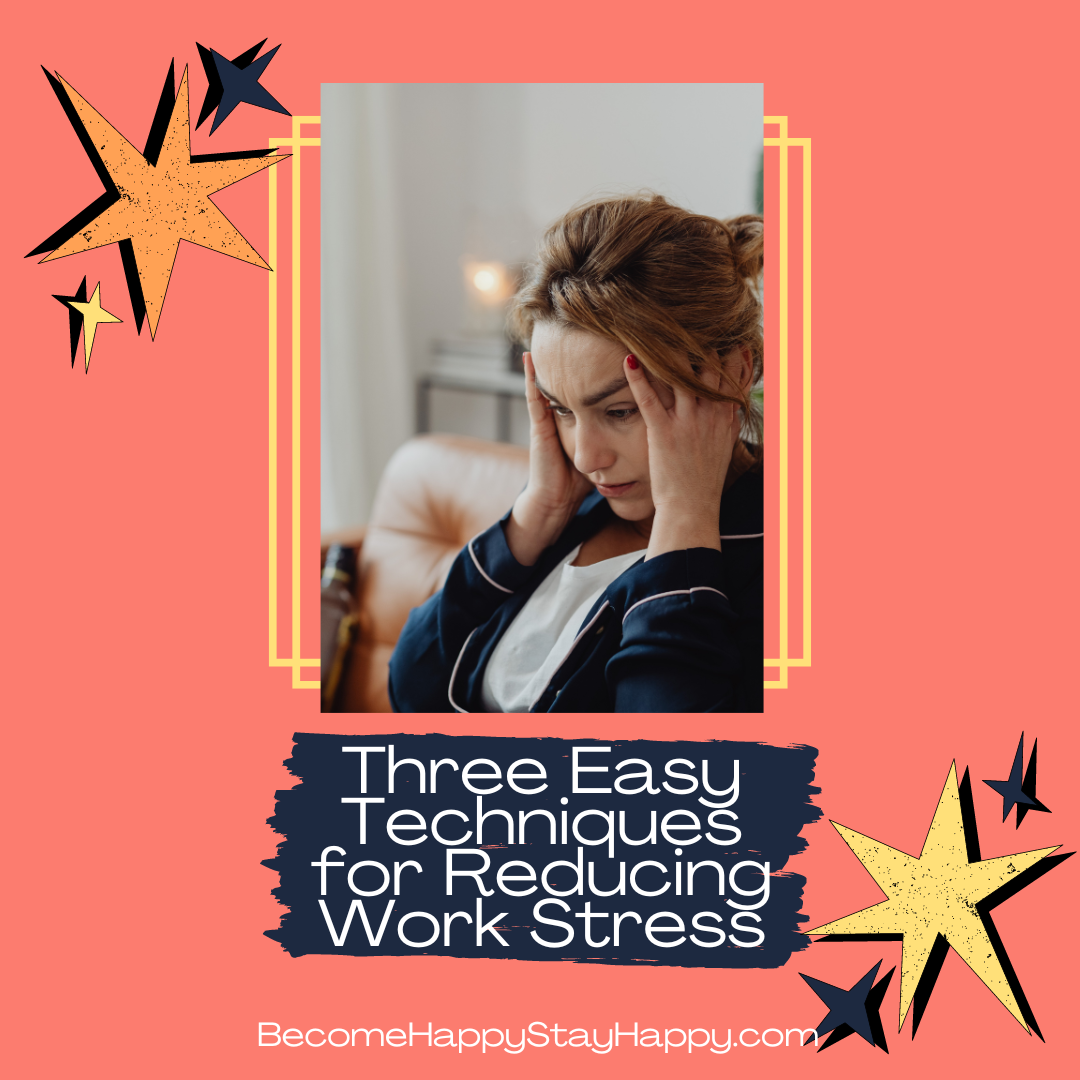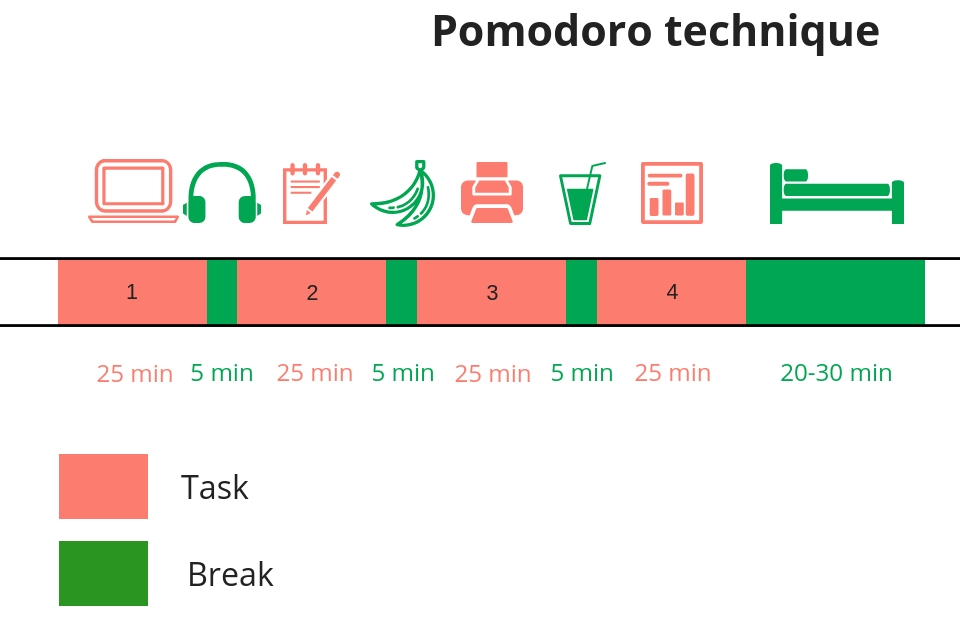Long days full of responsibilities, duties, different tasks, and unexpected assignments can be challenging and stressful. Your coping at work is essential to staying healthy. A massive workload without the possibility of breaks is one of the most significant causes of stress at work. Both your body and your mind can be adversely affected when you cannot take adequate breaks from your work. Such pressure can lead to constant illness, depression, insomnia, and difficulty in decision-making. The above are just a few stress symptoms. You can check out a longer list of stress symptoms in the blog article "30 Stress Symptoms You Need to Be Aware Of".
How can you reduce the negative impact of work overload?
Breaks at work
Different studies show that you are personally better off and your productivity is better when you focus on the same task for just 25-90 minutes at a time.

1. Basic rest-activity cycle
The pioneering sleep researcher Nathan Kleitman discovered something he named the "basic rest-activity cycle" -- the 90 minute periods at night during which we move progressively through five stages of sleep, from light to deep sleep, and then out again.
Kleitman noticed that our bodies were operating with similar 90 minutes of periods during the day as we move from periods of higher to lower attention. That rhythm is called the "ultradian rhythm."
“If we work at high intensity for more than 90 minutes, we begin to draw on these emergency reserves to keep us going. Effectively, that means we move from parasympathetic to sympathetic arousal -- a physiological state more commonly known as "fight or flight."

You can read more about the ultradian rhythm in the article "The 90-Minute Solution: How Building in Periods of Renewal Can Change Your Work and Your Life”.
2. Pomodoro technique
Pomodoro technique teaches you to work with time instead of fighting it.
The structure of the technique is as follows:
1. Work on something for the next 25 minutes
2. Take a short break
3. Continue the pattern and after the fourth repetition take a more extended break (20-30 minutes).

For more information on Pomodoro technology, visit the developer's website.
3. Rule of 52 and 17
Using the time-tracking and productivity app, DeskTime, the habits of the most productive workers were studied. It turned out that 10% of the most productive workers work 52 minutes at a time and then take a 17-minute break before continuing their work.
“The reason the most productive 10% of our users are able to get the most done during the comparatively short periods of working time is that their working times are treated as sprints. They make the most of those 52 minutes by working with intense purpose, but then rest up to be ready for the next burst. In other words, they work with purpose.”
For more information on Rule of 52 and 17, please read the article “The Rule of 52 and 17: It's Random, But it Ups Your Productivity”.
What could you do during your breaks at work?
The basic idea behind the break is that the content of the break should be different from the work activity. In other words - if you are doing some desk-work it would be great if you could move, walk or even jump. If your work is physically active it would be great if you could take a rest, meditate or maybe take a brief nap.
Here are some examples of break activities in this list:
Energizing activities:
1. Watch animal videos on YouTube
2. Listen to energizing music
4. Walk up the stairs and down the stairs a few times
5. Arrange your table or your drawer
Relaxing activities:
1. Go outside (or enjoy inside plants if outside is not an option)
2. Meditate (either by yourself or using different meditation exercises)
3. Take a quick nap
4. Do nothing for two minutes (using this amazing website)
5. Listen to white noise (you find a free light version of White Noise from this link)
So to keep stress at bay, it is useful to have some breaks at work. A nice side effect of having breaks is that you're more productive and happier as well. Win-win, I would say 🙂